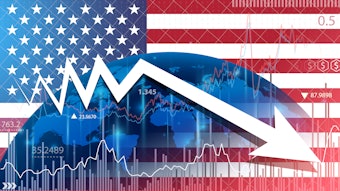
The pace of the global supply chain showed no signs of slowing in 2024. In fact, the global freight and logistics market is forecast to be worth $18.69 billion by 2026. It was another year of considerable disruption in many different forms, from increasingly sophisticated cargo theft to evolving geopolitical situations, and frequent instances of extreme weather.
What can businesses do to manage risk, minimize loss and bolster their resilience in the year ahead?
Here’s some of the key supply chain trends likely to encounter in 2025.
- Renewed focus on cost-efficiency
The ongoing cost of living crisis has become a global issue, and while it looks different in every country, businesses around the world are attempting to counter high inflation by cutting costs to stabilize their bottom lines. The transport and logistics space is likely to see SMEs ramping up measures like load consolidation and route optimization (e.g. to reduce deadhead miles).
The industry is also likely to see fewer loads being stored and shipped without the right insurance coverage. Taking out a policy that’s designed to cover the actual value of the load, as well as the specific risks applicable, is one of the best steps supply chain businesses can take to insulate themselves from loss.
2. Enhanced supply chain visibility through data and AI
Over the last few years, artificial intelligence (AI) tools have slowly but steadily infiltrated business workflows. Today, these tools are seamlessly optimizing any number of processes within the supply chain. Through historic and predictive data, AI can forecast fluctuations in capacity and raw materials, enabling businesses to adjust their procurement strategies accordingly. It’s now possible to map the shipping routes that pose the lowest risk, and even minimize the chance of cargo damage in transit through AI-modeled loading configurations — this will certainly increase throughout 2025.
3. Increased commitment to sustainability
The impact of climate change is only getting more evident, with extreme weather events like Hurricane Milton causing huge financial losses. The European Environment Agency predicted that global logistics will cause 40% of global carbon emissions by 2040, and sustainability has gone from a compliance checkbox to a central component of business strategy.
In 2025, we expect businesses to further prioritize the reduction of environmental impact, embracing alternative fuels, investing in low and no-emission vehicles, and taking steps to cut last-mile emissions too. According to a 2021 study by MIT , “last-mile delivery” accounts for approximately 8% of global greenhouse gas emissions. Next year will see a sharpened focus on decarbonizing last-mile delivery, with methods like electric vehicles and drone delivery increasing.
4. Continued navigation of geopolitical events
2024 was a year of considerable political upheaval. As well as several key elections across the globe, we saw the continuation of the war in Ukraine, and the escalation of the conflict in the Middle East. The economic impact of these geopolitical events can’t be overstated — from boycotts and trade sanctions to changing tariffs, there’s so much for supply chain businesses to navigate.
Agility is crucial to survival in such a tumultuous landscape, and the businesses equipped to adapt to evolving market conditions, comply with new regulations, or meet unexpected customer demands will fare best. This might include measures like organizing inventory and capacity buffers, ensuring alternative suppliers are lined up, and making the most of active risk management insights, which enable businesses to stay ahead of risk.
5. Tightened security against cargo theft
Double brokering has been headline news for the transport and logistics industry since late 2022, and diversifying methods of cargo theft continue to pose a considerable risk to businesses across the supply chain.
For 2025, expect supply chain businesses to invest in strengthening their loss prevention strategies — not just through taking out the right policies, but also by tightening cyber security, being more stringent with digital ID checks, and utilizing data in other ways to minimize the risk of theft.
The New Year will pose many new and complex challenges. The hope is for supply chain businesses to harness emerging technologies to improve agility and resilience.

![Top Tech Logo Vertical [color]](https://img.foodlogistics.com/files/base/acbm/scn/image/2024/11/top_tech_logo_Vertical__color_.672d2a7c2733d.png?auto=format%2Ccompress&bg=fff&fill-color=fff&fit=fill&h=191&pad=5&q=70&w=340)












![Top Tech Logo Vertical [color]](https://img.foodlogistics.com/files/base/acbm/scn/image/2024/11/top_tech_logo_Vertical__color_.672d2a7c2733d.png?auto=format%2Ccompress&bg=fff&fill-color=fff&fit=fill&h=135&pad=5&q=70&w=240)





![2024 Top Software Color[vertical]](https://img.foodlogistics.com/files/base/acbm/scn/image/2024/10/2024_Top_Software___color_vertical_.6705637b3b03c.png?auto=format%2Ccompress&bg=fff&fill-color=fff&fit=fill&h=135&pad=5&q=70&w=240)





